Where to Live in Tokyo for Couples [2025-2026 Guide]
Finding the right neighborhood in Tokyo as a couple is about balancing romance with practicality: an easy commute and late-night dining, quiet streets and weekend fun, parks for slow walks, and apartments that don’t feel like shoeboxes. This guide distills the best areas for couples in 2025-2026, with on-the-ground vibes, who each area suits, and realistic rent expectations for a 1LDK or compact 2DK. Use it to shortlist 3–4 neighborhoods, then visit them at both day and night before you sign.
How to Choose as a Couple (Quick Framework)
-
Commute and lifestyle: Aim for a combined commute under 60 minutes round-trip. One partner’s dream area isn’t worth daily friction.
-
Space and layout: A 1LDK with a door between the bedroom and living room gives personal space and reduces noise. Soundproofing and storage matter more than raw square meters.
-
Walkability and “date radius”: Count how many cafés, casual restaurants, and grocery options are reachable within a 10–12 minute walk.
-
Future plans: If you anticipate marriage or kids, proximity to clinics, parks, and supermarkets will age well.
-
Budget discipline: Set a rent ceiling (ideally under 25–30% of combined take-home) so you can still travel and enjoy the city.
Daikanyama: Stylish, Slow, and Incredibly Walkable
Daikanyama blends boutique fashion, tasteful cafés, and leafy streets—perfect for couples who like slow mornings and design-forward living. Think wine bars, artisanal bakeries, and bookstores you’ll actually browse together. Apartments are often compact but nicely finished; the vibe is polished without feeling stiff. You can walk to Ebisu and Nakameguro, which multiplies dining and date options.
Best for: Creative professionals, remote workers, couples who value aesthetics and walkability over size.
Trade-offs: Premium rent, small floor plans, high demand.
Nakameguro: Riverside Romance and Nighttime Glow
Nakameguro’s cherry-blossom-lined river delivers classic Tokyo romance each spring, and the backstreets stay cozy year-round with izakaya, craft coffee, and intimate eateries. It’s one stop from Daikanyama and minutes to Shibuya on the Tokyu Toyoko Line. You’ll find renovated low-rise apartments and newer builds closer to the station.
Best for: Food-loving couples who want a soft, neighborhood feel with easy access to the city core.
Trade-offs: Prices spike near the river; good units go fast; tourists during sakura season.
Ebisu: Refined Urban Living with Endless Dining
Ebisu is grown-up without being dull: Yebisu Garden Place, excellent supermarkets, wine shops, and countless restaurants from casual to celebratory. Transit is superb (JR + Hibiya Line), making dual-commute households easier. Many buildings are modern and secure, with concierge-like amenities.
Best for: Busy professionals, frequent diners, couples who want convenience and nice finishes.
Trade-offs: High rent and living costs; smaller value per yen than western suburbs.
Meguro: Calm Streets, Practical Comfort
Meguro has a quieter, residential tone with the bonus of river walks, reliable supermarkets, and quick access to Ebisu and Shibuya. Streets are greener than you expect so close to central Tokyo. Apartment stock ranges from vintage to luxe; you’ll find livable layouts and fewer late-night crowds.
Best for: Couples who want peace without sacrificing connectivity.
Trade-offs: Less nightlife on your doorstep; stylish units still price up.
Jiyugaoka: Date-Ready Streets with a European Touch
Jiyugaoka’s charm is magnetic: flower shops, dessert cafés, and a relaxed weekend rhythm. It’s the kind of place where a “quick errand” turns into an afternoon stroll. Commuting to central hubs takes longer than Shibuya-adjacent areas, but many couples find the lifestyle worth it.
Best for: Café-hoppers, remote workers, design lovers.
Trade-offs: Commute time to the CBD; rents reflect the neighborhood’s popularity.
Kichijoji: Park Life Meets City Energy
Kichijoji’s ace is Inokashira Park—boats, paths, and picnic lawns—plus a lively commercial core with indie shops and music venues. You’ll often get more space for your budget than central Tokyo, and the neighborhood stays interesting after you’ve “done it all.” The Chuo Line shoots you to Shinjuku fast.
Best for: Couples who want space, nature, and culture in one package.
Trade-offs: Longer ride to Marunouchi/Ginza offices; crowds on weekends.
Shimokitazawa: Indie, Playful, and Surprisingly Convenient
“Shimokita” is youthful, vintage, and creative—tiny theaters, secondhand fashion, craft beer, and live music. Since the station area was redeveloped, navigation is easier while keeping the bohemian heartbeat. Rents can be gentler than central areas, and the Odakyu/Keio Inokashira lines give flexible access to Shinjuku and Shibuya.
Best for: Creative couples, starters in their 20s–30s, people who want fun over polish.
Trade-offs: Smaller apartments, minimal parking, lively noise around popular streets.
Azabu-Juban: International, Upscale, and Convenient to Roppongi
Azabu-Juban balances a neighborhood shotengai charm with embassies and international supermarkets. It’s common to find buildings with concierge, security, and larger floor plans. You’ll pay for the convenience, but if you entertain or work late near Roppongi/Minato, the location is hard to beat.
Best for: International couples, embassy/consulting/finance professionals.
Trade-offs: Very high rents; higher everyday costs.
Setagaya (Futako-Tamagawa, Sangenjaya, Yoga): Quiet Now, Future-Proof Later
Setagaya is vast and largely residential, filled with parks, schools, and supermarkets. Futako-Tamagawa mixes riverside cycling with a gleaming retail complex; Sangenjaya is hip and energetic without being hectic; Yoga is calm and practical. You’ll often find bigger 1LDK/2DK units and better soundproofing for the price.
Best for: Couples planning for marriage or kids who still want decent access to the city.
Trade-offs: Longer commutes to some business districts; nightlife is lower-key.
Koenji & Ogikubo: Affordable, Characterful West Tokyo
On the JR Chuo Line, Koenji is spirited (music, vintage, street festivals), while Ogikubo leans quieter with great ramen and family-owned shops. Both shoot to Shinjuku quickly. Rents can be more forgiving, and you’ll find older but livable buildings with honest space.
Best for: Budget-conscious couples who still want a strong neighborhood identity.
Trade-offs: Fewer “luxury” buildings; older stock may mean thinner walls—check soundproofing.
Typical Rent Ranges for 1LDK (Guide Only)
-
Daikanyama / Ebisu / Azabu-Juban: High tier
-
Nakameguro / Meguro / Jiyugaoka: Upper-mid to high
-
Shimokitazawa / Kichijoji: Mid (rising for new builds near stations)
-
Setagaya (Futako, Sangenjaya, Yoga): Mid, better value per square meter
-
Koenji / Ogikubo: Mid to budget-friendly, depending on building age and distance
Note: Rents vary by building age, station distance, renovation quality, and floor. New builds near stations command a premium; older low-rise units set back from main roads offer value.
Date-Night and Daily-Life Scorecard (What to Look For)
-
Dining within 10 minutes: Count at least five go-to spots (weekday dinner, weekend brunch, quick takeout, anniversary-worthy restaurant, and a dessert place).
-
Groceries and daily shopping: One full-line supermarket plus a specialty store (bakery, butcher, or greengrocer) reduces weekend errands.
-
Parks and green: A park you genuinely like visiting will improve your shared mood more than you expect.
-
Night noise check: Visit at 10–11 pm on Friday; stand still and listen. If you hear bass or bar chatter, you will hear it at home.
-
Building checks:
-
Sound: Ask about wall composition, check for double windows, and run water to test pipe noise.
-
Storage: Measure for vacuum, suitcase, seasonal clothes.
-
Light and privacy: South/east light is lovely; avoid windows that face a corridor.
-
Safety: Auto-lock, parcel lockers, and route lighting back from the station.
-
Sample Shortlists by Couple Type
-
Urban foodies with late work hours: Ebisu, Daikanyama, Nakameguro
-
Creative remote pair: Shimokitazawa, Jiyugaoka, Kichijoji
-
Future-focused nesters: Setagaya (Futako-Tamagawa, Yoga), Meguro
-
Budget-smart culturists: Koenji, Ogikubo, parts of Setagaya along local lines
-
International professionals: Azabu-Juban, Ebisu, Meguro
Viewing and Application Strategy
-
Search radius: Start with a 12–15 minute walk from the station; expand if you’re not finding value.
-
Time your viewing: Morning for natural light; evening for noise.
-
Be paperwork-ready: ID, income verification, emergency contact, and move-in date. Good units in popular areas can go same-day.
-
Negotiate smartly: If rent is firm, ask for a free month, minor repairs, or upgraded appliances.
-
Think beyond the unit: Hallway smell, elevator wait times, bicycle parking, trash room rules—all affect daily life.
Final Thoughts
Couples thrive in Tokyo when the neighborhood supports both romance and routine. If you want an endlessly “dateable” area, start with Daikanyama, Nakameguro, and Ebisu. For more space without losing buzz, Kichijoji, Meguro, and Jiyugaoka are standouts. If you’re building toward the next life chapter, Setagaya’s calm streets and larger layouts age gracefully. For budget with character, Koenji and Ogikubo deliver. And for upscale convenience with an international edge, Azabu-Juban is a perennial winner.
Shortlist three neighborhoods that match your commute, budget, and weekend style, then do on-foot research at two times of day. The right choice isn’t just where you sleep—it’s where your shared routines feel effortless and your best days happen often.
What are the best Tokyo neighborhoods for couples in 2025–2026?
Popular couple-friendly areas balance romance, walkability, and daily convenience. Central-living picks include Daikanyama, Nakameguro, Ebisu, Meguro, and Azabu-Juban for dining and short commutes. Lifestyle-first options include Jiyugaoka and Shimokitazawa for café culture and creative vibes. If you value parks and more space, Kichijoji and parts of Setagaya (Futako-Tamagawa, Sangenjaya, Yoga) are strong, while Koenji and Ogikubo offer character and comparatively gentler rents. The right fit depends on your combined commute, budget discipline, and weekend routines.
How should couples prioritize commute versus apartment size?
Start with a combined commute target (for example, under 60 minutes round-trip total) and test it against areas that meet your minimum size and layout (often a 1LDK or compact 2DK). A slightly smaller, well-designed unit near the stations you use daily usually yields more shared time—and less friction—than a bigger apartment that adds 20–30 minutes of daily travel per partner.
What layouts work best for two people?
A 1LDK with a true door between bedroom and living room protects quiet time for calls or differing sleep schedules. Look for square, usable living rooms (not long, narrow ones), a separate kitchen zone to reduce cooking smells, and storage depth for luggage and seasonal items. If you both work from home, prioritize a layout with a niche for a second desk or consider a 2DK/1SLDK in slightly less central areas.
How much rent should a couple allocate?
A practical guideline is 25–30% of combined take-home income for base rent, leaving room for utilities, commuting, and discretionary spending. Newer buildings near major stations or in prestige areas will command a premium. If you want more space without inflating costs, expand your search to neighborhoods one or two stops beyond core hubs or choose an older (but well-maintained) building set a 10–12 minute walk from the station.
Which areas feel most “romantic” for everyday life?
Nakameguro (river walks and sakura), Daikanyama (boutiques and wine bars), and Jiyugaoka (flower shops and dessert cafés) are consistently date-friendly without planning. Kichijoji adds easy nature time in Inokashira Park, while Meguro’s tree-lined streets and steady dining scene deliver relaxed evenings without crowds.
What’s the trade-off between central convenience and tranquility?
Central areas (Ebisu, Daikanyama, Azabu-Juban) compress commute times and put restaurants at your doorstep, but you’ll pay more per square meter and experience more evening foot traffic. Residential zones (Setagaya, parts of Meguro, Ogikubo) offer larger layouts, calmer streets, and better value, with the trade-off of longer or more complex commutes and fewer late-night options.
How can we quickly shortlist three neighborhoods?
Map your daily life first: main work locations (or lines), grocery and gym preferences, and preferred weekend radius (parks, cafés, cinemas). Overlay this with a rent ceiling and a target walking time to the nearest station (12–15 minutes). Using those filters, many couples converge on two shortlists: (1) Daikanyama/Nakameguro/Ebisu for urban dining and short commutes; or (2) Kichijoji/Setagaya/Meguro for space, parks, and quiet.
What should couples check during apartment viewings?
Test sound: run water, close doors, and listen near windows for train or bar noise. Check natural light at your typical at-home hours. Measure storage for suitcases and cleaning gear. Inspect ventilation in the kitchen and bath. Confirm parcel lockers and bicycle parking. Walk the route home at night to verify lighting and street feel.
Are older buildings a bad idea?
Not necessarily. Many older low-rise buildings offer honest space and value, especially a bit removed from stations. Prioritize maintenance quality (recent exterior work, updated plumbing, double-glazed windows). If the unit’s on a top floor without an elevator, consider grocery and move-in logistics. Thin walls are the common drawback—test sound carefully.
Is Shimokitazawa practical or just “cool”?
Both. Shimokitazawa’s creative culture (vintage shops, live houses, small theaters) makes for lively evenings and spontaneous dates. Practicality has improved after station area renewal, with clearer streets and better connectivity to Shibuya and Shinjuku via the Keio Inokashira and Odakyu lines. Expect smaller units and more nightlife noise near key streets; look a few blocks out for calmer living.
How do Kichijoji and Setagaya compare for nature and space?
Kichijoji gives you a vibrant center plus Inokashira Park—ideal for morning runs, picnics, and decompressing together—while maintaining quick access to Shinjuku via the Chuo Line. Setagaya is broader and more residential: Futako-Tamagawa pairs riverside cycling with a polished retail core; Sangenjaya delivers energy without full-bore nightlife; Yoga is calm and practical. Both areas tend to deliver larger 1LDK/2DK options for the price.
What makes Meguro appealing for long-term living?
Meguro sits in a sweet spot: quieter than Ebisu, but close enough for quick dinners out or transfers. You’ll find dependable supermarkets, pleasant river segments, and a range of buildings from classic to modern. For couples planning next-life steps (marriage, possible pets down the line), that “quiet but connected” profile ages well.
We’re international professionals—where should we look?
Azabu-Juban and parts of Ebisu and Meguro offer international supermarkets, a mix of embassies and global companies nearby, and buildings with stronger security and concierge-like services. The premium is real, but so is the convenience for late work hours and frequent hosting. If you want a calmer, design-forward alternative, Daikanyama and Jiyugaoka also work—trade some commute time for a softer daily rhythm.
How can we avoid overpaying?
Decide “must-haves” versus “nice-to-haves” (elevator, south-facing, separate kitchen, pet-friendly). Search beyond immediate station perimeters. Consider renovated older stock over compact new builds. If the rent is firm, negotiate on move-in incentives (key money reductions, free month, minor repairs, upgraded appliances) rather than price. Time your search outside peak turn-over periods if possible.
What noise pitfalls should couples watch for?
Units facing bar streets, rail corridors, or major intersections can collect bass and brake noise. Corner restaurants with outdoor seating can run late. Inside the building, trash rooms, stairwells, and elevator lobbies add intermittent sound. Visit at 10–11 p.m. on a weekend night, and simply stand and listen; that is your baseline.
What daily-life amenities matter most for two?
Within a 10–12 minute walk, aim for a full-line supermarket, at least one quick weeknight restaurant you both like, a café you’ll actually use, and access to a park or pleasant walking route. Parcel lockers, wide hallways, and reliable bicycle parking reduce small frictions. If either of you works remotely, confirm stable broadband options in the building.
Should we choose “buzz” or “calm” if we plan for marriage or kids?
Consider a hybrid: live near, but not inside, the buzz. Many couples choose calm streets a short walk from lively nodes—Meguro a few blocks from the river, Setagaya near Sangenjaya but off main roads, or Kichijoji outside the densest shopping grid. This preserves date-night access while protecting sleep and routines that become more valuable over time.
What’s a sensible viewing and application strategy?
Be paperwork-ready (ID, income verification, emergency contact, move-in date) before touring. Schedule one daylight and one evening visit in your top area. Expand your radius in concentric rings if stock is thin. When you find a match, act quickly but verify non-negotiables (noise, light, storage, ventilation) on the spot. Good units in popular neighborhoods can move the same day.
Bottom line: how do we make the “right” choice?
Define a shared routine first—commute, meals, exercise, and downtime—then choose the neighborhood that makes that routine frictionless. For walkable romance and dining, consider Daikanyama, Nakameguro, and Ebisu. For space and greenery without losing access, Kichijoji, Meguro, and parts of Setagaya excel. For character and budget control, Koenji and Ogikubo deliver. Visit at two times of day, trust what your senses report, and choose where your best regular days are easiest to repeat.

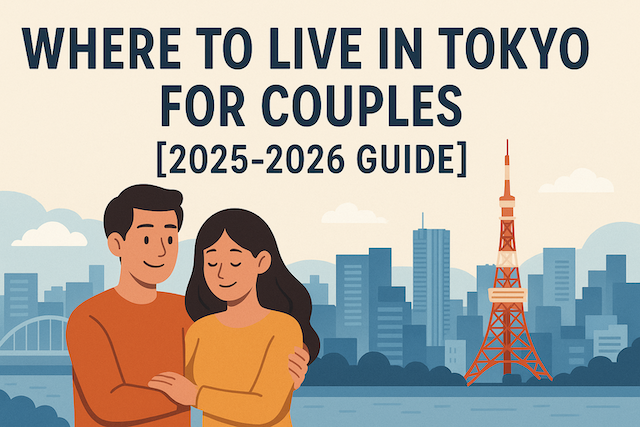
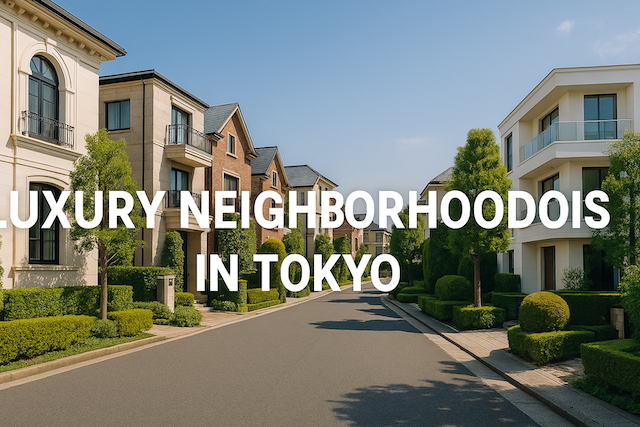
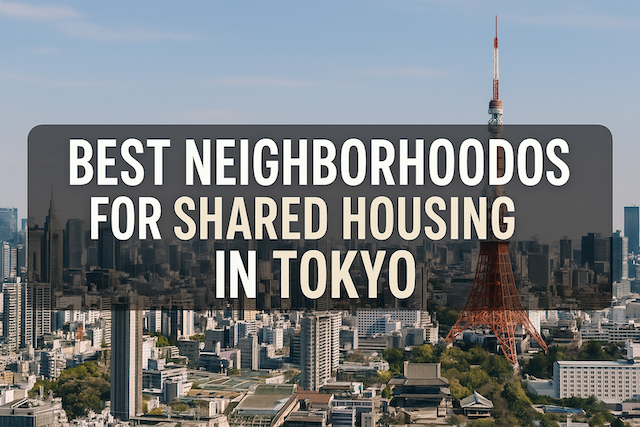
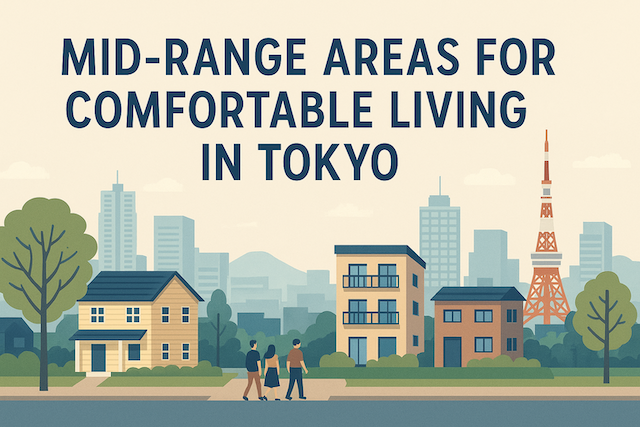
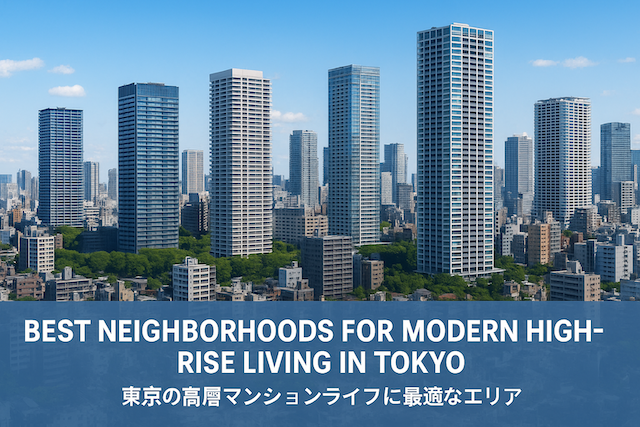

![Where to Live in Tokyo for Families with Kids [2025–2026 Guide]](https://tokyorelocationguide.com/wp-content/uploads/2025/10/ChatGPT-Image-Oct-17-2025-03_55_59-PM.png)